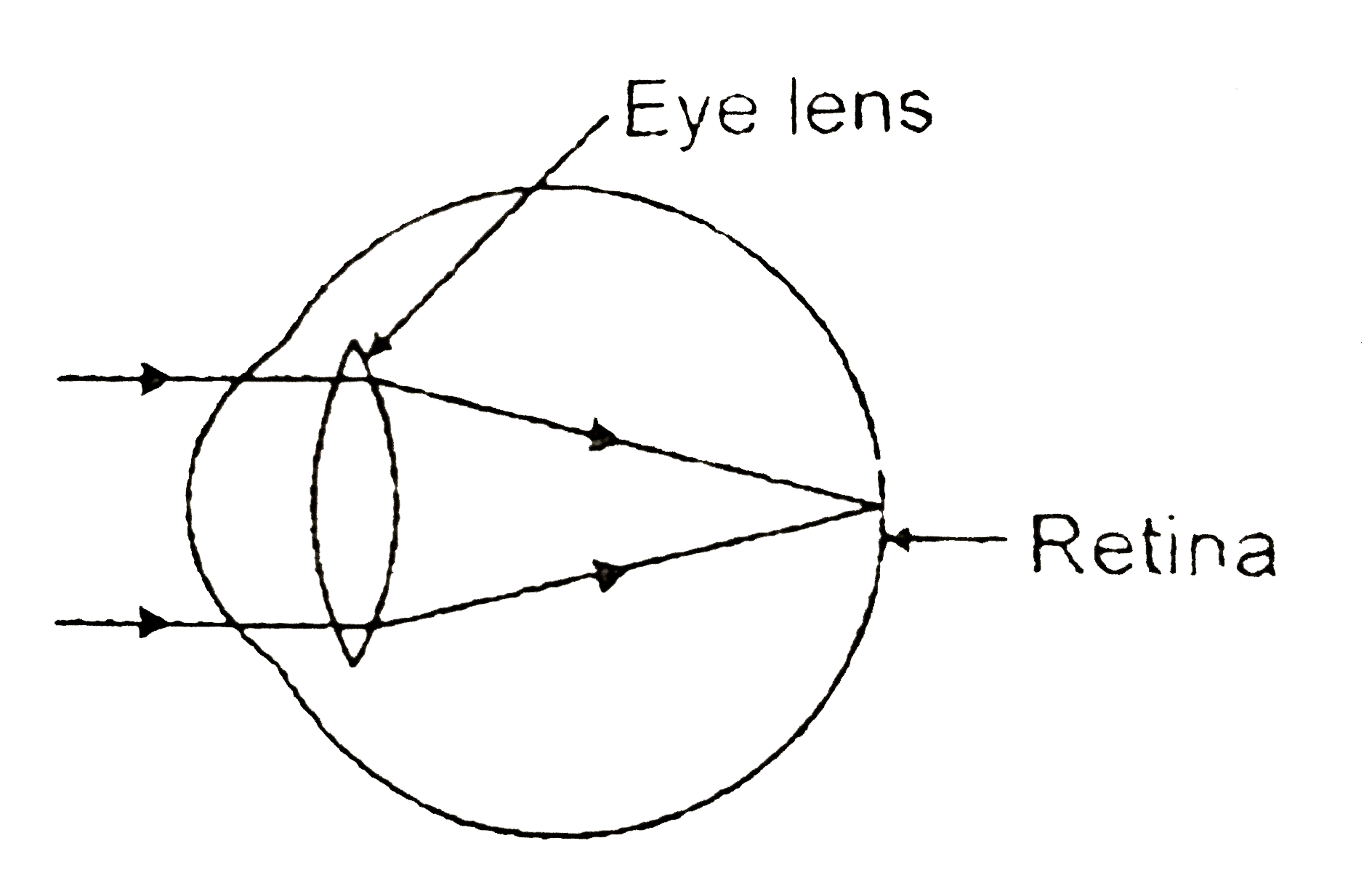A person can see object clearly only upto a maximum distance of 50 cm. Hi eye defect, nature of the corrective lens and its focal length are respectively
myopia, concave, 50 cm
myopia, convex, 50 cm
hypermetropia, concave, 50 cm
cataract, convex, 50 am
The correct Answer is:A
Step by step video, text & image solution for A person can see object clearly only upto a maximum distance of 50 cm. Hi eye defect, nature of the corrective lens and its focal length are respectively by Physics experts to help you in doubts & scoring excellent marks in Class 12 exams.
Updated on:21/07/2023Similar Questions
Knowledge Check
A person can not see the objects clearly placed at a distance more than 40 cm . He is advised to use a lens of power
A−2.5DB+2.5DC−6.25DD+1.5DA short sighted person can see objects most distinctly at a distance of 16 cm. If he wears spectacles at a distance of 1 cm from the eye, then their focal length to see distinctly at a distance of 26 cm
A25 cm, convexB25 cm, concaveC37.5 cm, convexD37.5 cm, concaveA person cannot see beyond a distance of 50 cm.The power of corrective lens required to see distant object is
A−1.5 DB−1.0DC−3 DD−2.0 D
If a person can see most clearly at a distance of 1000 cm .Find the power of the lens used to see object at 40 cm .
View SolutionIf a person can sees clearly at a distance of 100 cm, then find the power of leris used to see object at 40 cm.
View SolutionThe ciliary muscles of eye control the curvature of the lens in the eye and hence can alter the effective focal length of the system. When the muscles are fully relaxed, the focla length is maximum. When the muscles are strained the curvature of lens increases (that means radius of curvature decreases) and focla length decreases. For a clear vision of curvature decreases) and focal length decreases. For a clear vision the image must be on retina. from eye-lens. it is about 2.5cmfor a grown-up person
A person can theoretically have clear vision of situated at any large distance from the eye. The smallest distance at which a person can clearly see is related to minimum possible focal length. The ciliary muscles are most straineed in this position. For an average grown-up person minimum distance of object sould be around 25cm.
A person suffering for eye defects uses spectacles (eys glass). The function of lens of spectacles is to form the image of the object within the range in which person can see clearly. The image of the spectacle-lens becomes object for eye-lens and whose image is formed on retina.
The number of spectacle-lens used for the remedy of eye defect is decided by the power of hte lens required and the number of spectacle-lens is equal to the numerical value of the power of lens with sign. for example power of lens required is +3D (converging lens of focal length 1003cm) then number of lens will be +3.

For all the calculations required you can use the lens formula and lens maker's formula. Assume that the eye lens is equiconvex lens. Neglect the distance between eye lens and the spectacle lens. A nearsighted man can clearly see object only upto a distance of 100cm and not beyond this. The number of the spectacles lens necssary for the remedy of this defect will be.
View SolutionA student can distinctly see the object upto a distance 15cm. He wants to see the black board at a distance of 3m answer the following questions (a) Focal length of lens (b) power of lens
View SolutionA far sighted person cannot see object clearly al a distance less than 75 cm from his eyes. The power of the lens needed to read an object al 25 cm is
View Solution
